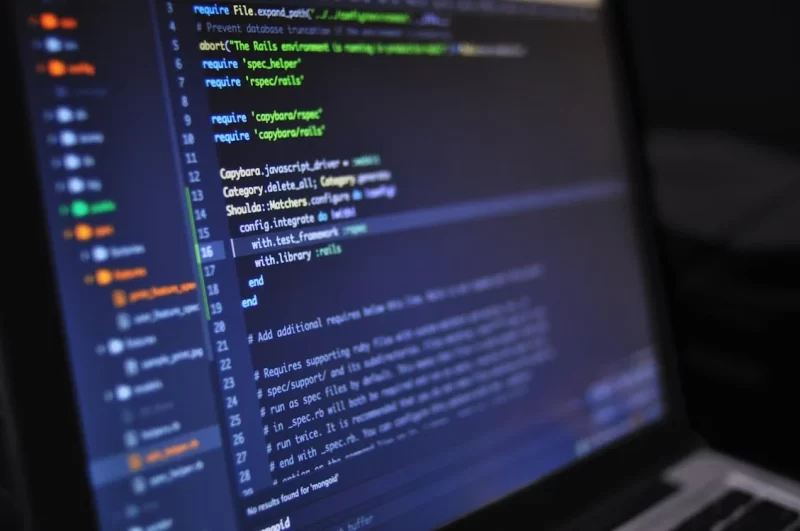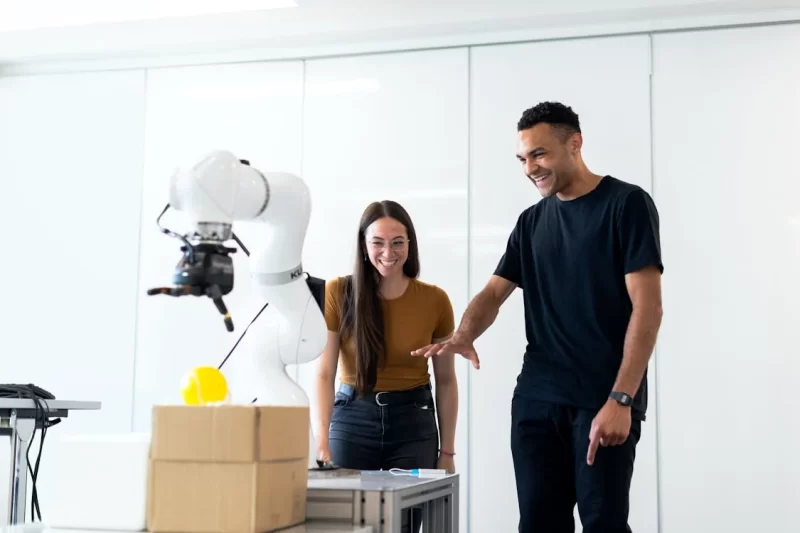Robotics has progressed from science fiction to a vital aspect of our everyday existence. Long before, it was just a simple part of human imagination, but now, it has served various sectors and has helped numerous countries towards work efficiency and efficacy. Today, we’ll examine the foundations and importance of robotics in this investigation, its uses in various industries, and future consequences.
Revealing the Bases: An In-Depth Exploration of the Principles of Robotics
Robotics is an exciting field at the nexus of science, engineering, and technology that has evolved from science fiction to become a necessary component of our everyday existence. In this thorough investigation, we will dissect the essential elements that form the basis of robotics, covering sensors, actuators, control systems, and the complex interactions of artificial intelligence.
Actuators and Sensors
Sensors and actuators, the motor and sensory abilities that enable machines to communicate with their surroundings, are the fundamental components of robotics. Sensors provide robots with the capacity to see and gather data. They can be as basic as proximity detectors or as complex as sophisticated vision systems. Conversely, actuators convert this data into actual physical actions, enabling robots to move around, interact with objects, and react quickly to their environment.
A robot’s sensors act as its eyes and ears, gathering data about its surroundings. Thanks to vision sensors, robots can recognize forms, colors, and patterns in visual data. Robots can interact with the natural world using touch sensors, which give them a tactile sensation, and environmental sensors measure things like humidity and temperature.
Control systems act as the conductors, controlling data flow and guaranteeing accurate and effective movement execution by robots. These mechanisms are essential to accomplishing intentional and well-coordinated movements. Control systems determine how robotic devices behave, whether navigating a vehicle, manipulating objects with a robotic arm, or carrying out intricate tasks. Control systems dictate robot behavior.
Both Machine Learning and Artificial Intelligence
They combine artificial intelligence (AI) and robotics, promising to revolutionize machine capabilities. AI gives robots cognitive abilities to make decisions, learn from mistakes, and adjust to changing conditions. Through data-driven insights, machine learning, a subset of artificial intelligence, allows robots to improve their performance continuously.
Robots with artificial intelligence are more cognitively capable and able to process data, identify patterns, and come to conclusions. With this skill, robots can do more jobs, such as object recognition, natural language comprehension, and event prediction. Robots can learn from experiences using machine learning algorithms, which help them develop new talents, improve their current ones, and continually improve their performance in response to input from their interactions with their surroundings.
Robot Programming
The brains behind a robot are programmed. Robot behavior is defined by algorithms written in programming languages like Python and C++, which engineers and programmers use. This entails teaching the robot to process sensory information, decide what to do, and carry out actions that align with predetermined goals.

Robocode programming necessitates a profound comprehension of sensory data interpretation. Sensor data must be processed, patterns must be identified, and algorithms must understand the surrounding environment. This entails dealing with difficulties such as real-time processing, calibration, and noise reduction. A robot needs to be able to make judgments based on its perception of its surroundings. Alphabets for determining decisions range from more intricate probabilistic models to rule-based systems. The idea is to allow robots to make decisions that advance their goals while considering uncertainty and reacting to changing circumstances.
Robotics in Various Sectors
Production and Automation
Manufacturing has been transformed by robotics by automating repetitive operations. This improves accuracy and quality in addition to efficiency. Advanced vision systems on robotic arms enable them to accomplish complex assembly operations with unmatched precision.
Robotics in Medicine and Healthcare
Robots play a significant role in patient care, rehabilitation, and surgical operations in the healthcare industry. When operated upon by proficient surgeons, surgical robots facilitate minimally invasive operations that shorten recovery periods and enhance patient outcomes.
Investigating and Studying
Robots are essential for investigating hostile and isolated areas. Robots gather information and research and overcome dangerous obstacles, whether submerged in water or space. A risk to human health. These devices allow human exploration to go farther than it would otherwise be possible.
Dangerous Conditions
Robots are essential because they can work in dangerous locations with hazardous materials or nuclear plants. By limiting human exposure to potentially dangerous situations, their use improves safety.
Robotics’s Place in Safety and Efficiency
Robotic automation increases productivity while enhancing worker safety. Robots do dangerous and tedious activities well, lowering the possibility of human error and injury.
Artificial Intelligence and Robotics
Robotics and AI are promising fields that present ethical questions. While artificial intelligence (AI) improves robots’ cognitive capacities, it also offers privacy, accountability, and employment issues.
Upcoming Trends and Innovations in Privacy
There is room for more creativity in robots as technology develops. At the same time, emerging technologies such as swarm and soft robotics open up new opportunities, and the continued development of robot-human collaboration poses ethical and societal problems.
What is the Significance of Robotics?
These days, robotics is a transformational force woven into many sectors and aspects of our lives. This thorough investigation reveals the many facets of robots’ significance, from improving productivity and security to making ground-breaking contributions to medical breakthroughs, space exploration, and other fields.
Efficiency and Automation
Automating labor-intensive and repetitive jobs is one of robotics’ most significant accomplishments. For instance, in the manufacturing industry, sophisticated sensors and accurate actuators enable robots to do repetitive, exact operations efficiently. This raises productivity while also improving the general caliber of the output. Automated procedures cut down on error margins and provide goods at a reasonable cost, boosting industry competitiveness in the international marketplace.
Security in Dangerous Situations
Robots are beneficial in situations where human safety is in danger. Robots can navigate and work in environments that would be dangerous for people, whether they are handling hazardous materials, investigating the ocean’s depths, or overseeing nuclear plants. Their implementation improves safety by lowering human exposure to potentially dangerous situations, decreasing the chance of mishaps, and lessening the effects of possible calamities.
Advances in Medicine
Robotics has had a revolutionary impact on the healthcare industry. Under the guidance of proficient surgeons, surgical robots facilitate minimally invasive treatments with increased accuracy. This results in enhanced patient results, shorter recovery times, and less scarring. In addition to surgery, robots help with drug distribution, patient care, and rehabilitation exercises. In hospitals, they demonstrate their adaptability in improving a range of healthcare-related elements.
Investigating and Studying
Robots are essential to continue expanding the frontiers of investigation and study. Robots allow us to reach areas that are difficult or unreachable for humans, whether through drones for environmental monitoring, the deployment of robots in space, or the sending of autonomous vehicles to the bottom of the ocean. These pioneers of mechanical science collect information, carry out investigations, and offer insights that advance scientific understanding.
Dangerous Conditions
Robots are not only adaptive in industrial contexts but also dangerous ones. Robots with sensors and cameras deployed in disaster-affected areas—such as those hit by nuclear accidents or natural disasters—can navigate debris, evaluate damage, and support search and rescue efforts. Their capacity to function in hostile environments is evidence of their significance in solving practical problems.
Knowledge and Creativity
A compelling educational resource that fosters enthusiasm for the STEM field, particularly robotics. Through experiential learning, educational robotics programs allow students to apply abstract ideas to real-world issues. In addition to producing a new generation of engineers and inventors, this fosters the collaboration, critical thinking, and problem-solving abilities necessary in the future workforce.
Difficulties and Ethical Issues
Unquestionably, robotics is important but presents difficulties and moral dilemmas. For example, the automation of occupations raises questions about the nature of work in the future. As robots are incorporated into more sectors of the economy, societal effects must be carefully considered when solving these issues—the ethical application of artificial intelligence and the retraining of the workforce.
Upcoming Patterns and Innovation
The future of robotics is full of fascinating possibilities. Novel approaches to design, such as swarm robotics, bioinspired architecture, and soft robotics, are made possible by emerging technologies. More autonomy and adaptability are anticipated when artificial intelligence and machine learning are further incorporated into robotic systems. These projections for the future point to an increasing significance for robotics, with ramifications for business, academia, and everyday life.
Conclusion
Robotics constitutes a dynamic and diverse field with far-reaching implications, altering how we live and work, from enhancing factory operations to advancing medical treatments and space exploration. As we navigate the ongoing advancements in robotics, it’s crucial to carefully evaluate the ethical and societal consequences they entail. The fusion of artificial intelligence, control systems, actuators, and sensors forms the foundation of robotics, enabling machines with perception, interaction, learning, and decision-making capabilities. This continued synergy promises remarkable technological advancements and transformative impacts across various aspects of our lives. Despite the scientific challenges, robotics embodies human ingenuity and our relentless pursuit of technological progress.






